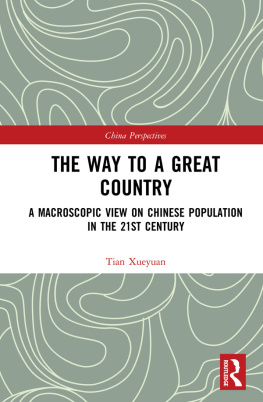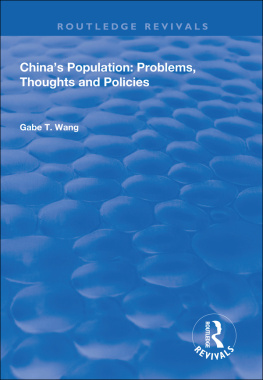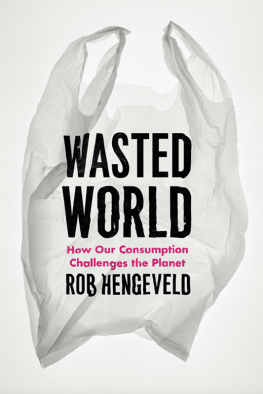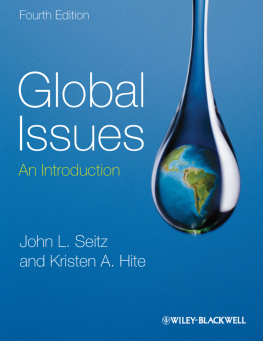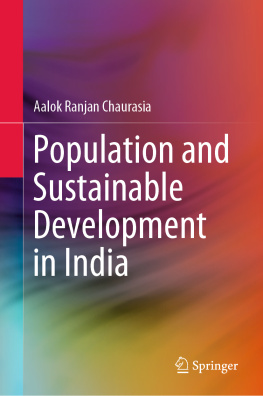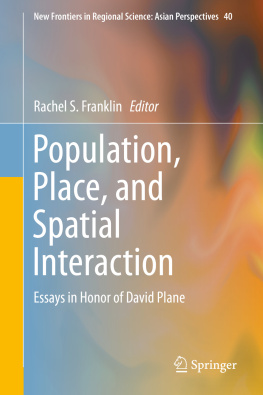The Way to a Great Country
Population is the most influential factor in social development and economic growth, especially in China. In this book, author Tian Xueyuan provides macro illustrations of the main issues confronting Chinas population and development in the 21st century and advises on facing population development challenges to sustainable future development. This book explores issues such as the relation between the change of population and consumption, how the age of the working population affects economic structure and transition when above or below the Lewis turning point, the impact of population aging on growth speed and the pension system, how to remove the urbanrural dual structure, how to reform exam-oriented education, and how to balance relations between population, resource, environment, and sustainable growth.
The discussions on populationconsumption relations, laboreconomy relations, urbanization and ruralurban relations, and beyond provide insightful judgment on and prospects for Chinas future development. This book is helpful for international audiences to better understand Chinas population and development challenges and strategies.
Tian Xueyuan is the former director of the Chinese Academy of Social Sciences (CASS) Institute of Population, a CASS research fellow, and a PhD supervisor.
China Perspectives
The China Perspectives series focuses on translating and publishing works by leading Chinese scholars, writing about both global topics and China-related themes. It covers humanities and social sciences, education, media, and psychology, as well as many interdisciplinary themes.
This is the first time any of these books have been published in English for international readers. The series aims to put forward a Chinese perspective, to give insights into cutting-edge academic thinking in China, and to inspire researchers globally.
Titles in sociology currently include:
Social Transformation and Chinese Experience
Peilin Li
Chinas Low Birth Rate and the Development of Population
Guo Zhigang, Wang Feng, Cai Yong
Petitions and Power
A Story of the Migrants of a Dam in China
Xing Ying
Living Conditions and Targeted Aiding Mechanisms of the Urban Underclass in China
Zhu Li, Mao Feifei
The Way to a Great Country
A Macroscopic View on Chinese Population in the 21st Century
Tian Xueyuan
For more information, please visit www.routledge.com/series/CPH
The Way to a Great Country
A Macroscopic View on Chinese Population in the 21st Century
Tian Xueyuan
This book is published with financial support from the Chinese Fund for the Humanities and Social Sciences.
First published in English 2019
by Routledge
2 Park Square, Milton Park, Abingdon, Oxon OX14 4RN
and by Routledge
52 Vanderbilt Avenue, New York, NY 10017
Routledge is an imprint of the Taylor & Francis Group, an informa business
2019 Tian Xueyuan
Translated by Chen Jiabin
The right of Tian Xueyuan to be identified as author of this work has been asserted by him in accordance with sections 77 and 78 of the Copyright, Designs and Patents Act 1988.
All rights reserved. No part of this book may be reprinted or reproduced or utilised in any form or by any electronic, mechanical, or other means, now known or hereafter invented, including photocopying and recording, or in any information storage or retrieval system, without permission in writing from the publishers.
Trademark notice: Product or corporate names may be trademarks or registered trademarks, and are used only for identification and explanation without intent to infringe.
English Version by permission of China Social Sciences Press.
British Library Cataloguing-in-Publication Data
A catalogue record for this book is available from the British Library
Library of Congress Cataloging-in-Publication Data
Names: Tian, Xueyuan, author.
Title: The way to a great country : a macroscopic view on Chinese population in the 21st century / Tian Xueyuan.
Other titles: Da guo zhi lu. English
Description: Abingdon, Oxon ; New York, NY : Routledge, 2019. |
Series: China perspectives | Includes index.
Identifiers: LCCN 2018057060 (print) | LCCN 2019004015 (ebook) |
ISBN 9780429447792 (ebook) | ISBN 9781138330603 (hardcover)
Subjects: LCSH: ChinaPopulation. | ChinaPopulation policy.
Classification: LCC HB3654.A3 (ebook) | LCC HB3654.A3 T495313 2019 (print) |
DDC 304.60951dc23
LC record available at https://lccn.loc.gov/2018057060
ISBN: 978-1-138-33060-3 (hbk)
ISBN: 978-0-429-44779-2 (ebk)
Typeset in Times New Roman
by Newgen Publishing UK
Contents
Invigorating China through Science and Education, a 14-episode TV series made in a joint venture by the National Working Committee of the Young Pioneers of China and China Central Television (CCTV) in 1996, featured in the last episode an award ceremony in the China Hall of Science and Technology that honored the best 10 letters of a competition to write A Letter to the Future out of more than 600,000 entries by juveniles nationwide.
Also featured at the ceremony were comments and brief speeches by 10 scholars from the natural and social sciences whose fields were relevant to what the awarded letters touched on. The 10 awarded letters and the 10 speeches were all targeted at 2050, projecting potential changes, development trends, big pictures, and characteristics during the next half century in the fields of interest and how to strive for and contribute to the imagined future. The 10 letters and the speech drafts were then sealed and kept in CCTVs television tower, and will be reopened in 2050 to test the accuracy of the predictions.
I remember my brief speech started with the following:
Up until now, China is still the biggest country by population in the world. However, as all predictions go, India will pass us in population by the mid-21st century, and when that happens, we will happily hand over the seat of the largest population to them.
Why did I say happily? It was based on the three-step population strategy: growth control, then zero growth, and finally negative growth to a degree. The strategy was aimed to solve comprehensively the population problems in China, the success of which will mark a vital point on the road to the great revival of the Chinese nation, and the happily-handing-over-the-seat will demonstrate that the strategy has been well carried out.
China is a big country, and that is a fact that cannot and should not be avoided. Actually, it is always by comparison to claim something is big or small, much or little, and tall or short, which are all relative and not absolute descriptions. Meanwhile, comparisons can be drawn only between similar objects; for example, the tiger can only be compared with animals such as the elephant, the horse, and the cow, but not with cars or ships. Then how do we compare countries as whole objects with no strings attached?

